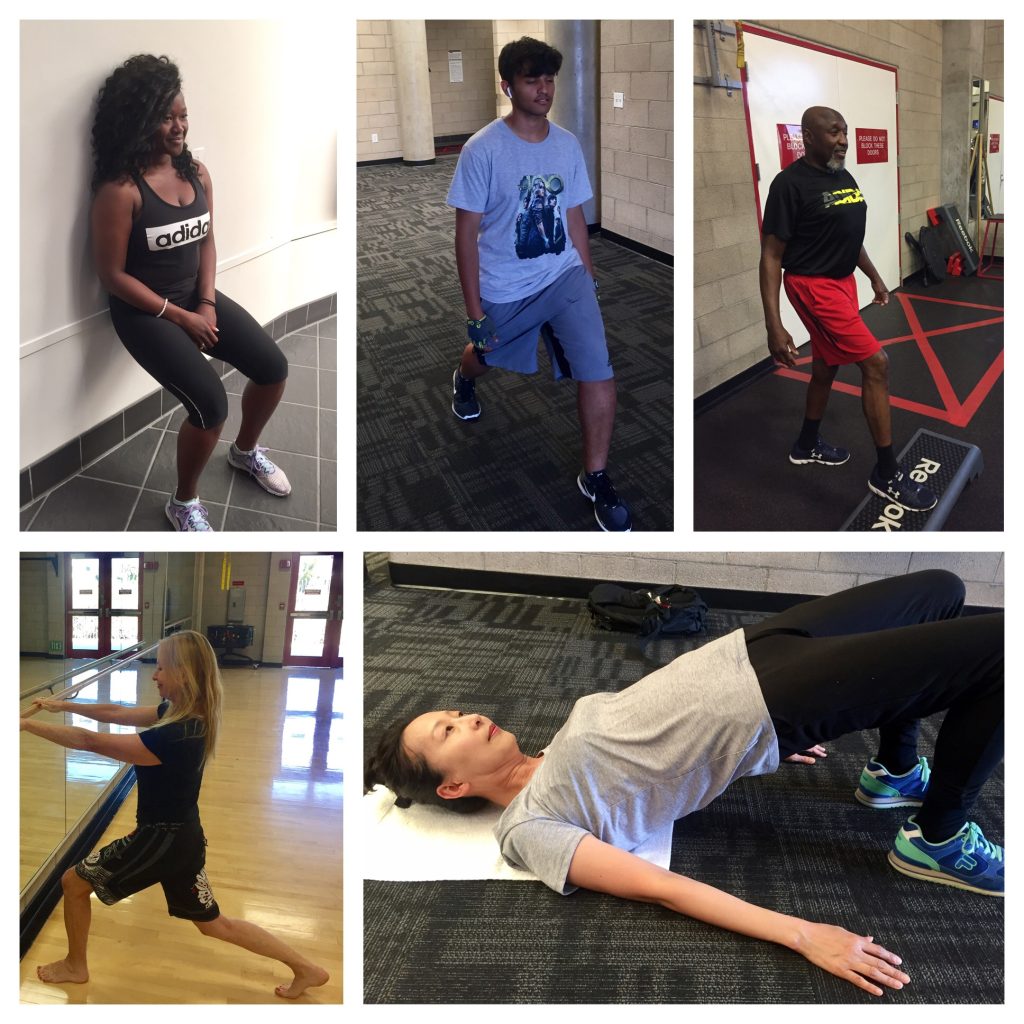What’s your go-to lunge modification exercise? And what about an alternative to your modification in case it’s not ideal for the person either?
As a fitness instructor, “Do you have a modification I could do instead of [insert exercise]?” is something I hear a time or twenty during the week. More experienced trainers and fitness instructors can improvise in a pinch when clients need modifications. If clients ask in advance, there’s time to find out about limitations about their possible knee pain and tight: hips, glutes, or low backs.
During a class, while everyone else is moving, and one person says they cannot do something, it can quickly cause a headless chicken running around situation.
Anticipating and having a plan B with modifications in your back pocket helps you stay calm and confident when this happens, whether it’s during an interview, consult, class or with a long term client.
Surveying the Masses
I work solo with groups and semi-private classes. I reached out and surveyed 50 experienced one-on-one trainers and fitness professionals for additional insight about this common request for modifications.
It was incredibly fascinating to discover that two resounding unanimous responses were to make sure Range of Motion (ROM) is low in any and all modifications, and quad strengthening exercises would be beneficial to help those muscles fire up during lunges.
While there were lots of creative modifications, there were 5 “go to” movements consistently suggested.
Modifications for Lunges

Here are the 5 lunge modifications and some helpful pointers on how to do them:
Wall sits
Good old fashioned, run of the mill wall sits can be done pretty much anywhere. Only equipment needed is, well, a wall of course.
Ideally, the client will do a wall sit in a position where their whole spine is flat to surface, and their knees are a direct shot in line with their hips as well as lined over the ankles; not extended past their toes.
For clients with knee discomfort, it’s a good idea for them to begin higher up, so the knees are not forming a 90 degree angle from the hips until they work up to that level.
Lunges holding a bar or suspension training bands
Another minimal equipment option is using a stable, perhaps working up to dynamic, surface such as a bar or suspension straps. Clients minimize their ROM and degree of balance difficulty while working on static lunges.
Have clients hold the bar, line the front knee up over the ankle and back foot follows the width of the hip as they move into their lunge. The spine should be straight with shoulders lined over the hips.
Static lunges/staggered lunges(a.k.a. split stance squat)
I was a little thrown off by the response static also called, staggered lunges to the question, “What modifications do you make for clients who cannot do lunges?”
Many trainers said that they recommend staggered lunges for clients with tightness in their hips and/or low back, while others said they suggest them in lieu of forward lunges, curtsy lunges, or walking lunges.
Cue this lunge is just as discussed with the assisted lunge above, only remove the bar or straps.
Step ups
Again, a minimal equipment needed modification, step ups can keep the ROM low and give clients the opportunity to use larger muscles, like their glutes, to minimize discomfort in the knees.
Start clients with a low step to keep the ROM minimal and have them place their entire foot on the step to begin. Weight should be equally distributed on the foot as they push onto the step lifting and returning the back foot to the floor.
Glute Bridges
Glute bridges can be done without any equipment, but a mat or something between the clients’ backs and hard floor might be nice.
Position clients on their backs with knees bent at 90 degrees and feet hips width distance. Cue them to press into the heels to lift and lower their hips one vertebrae at a time.
Special Thanks to:
Laura Puggina Pelosi, Brian Tabor, Fred Edwards, Crystal Lowery, Tommy Peters, Miriam Buchanan, Michele Schneider-Miller, Rachel May Fox, Shannon Logue
[info type=”facebook”]If you’re an NFPT trainer, join the Facebook Community Group to share your favorite modifcations and if you’re not, come chat with NFPT here![/info]
Theresa Perales has an MA in Spanish, and is an ESL teacher at San Diego State University (SDSU). After years of struggling with her weight, she decided to give exercise a try. A passion for health and fitness grew instantly and inspired her to become certified as a personal trainer with NFPT, and as a group fitness instructor with AFAA Group Fitness and Madd Dog Athletics® Spinning. Theresa believes that nutrition and fitness are not about aesthetics but ultimately about feeling healthy and empowered.

